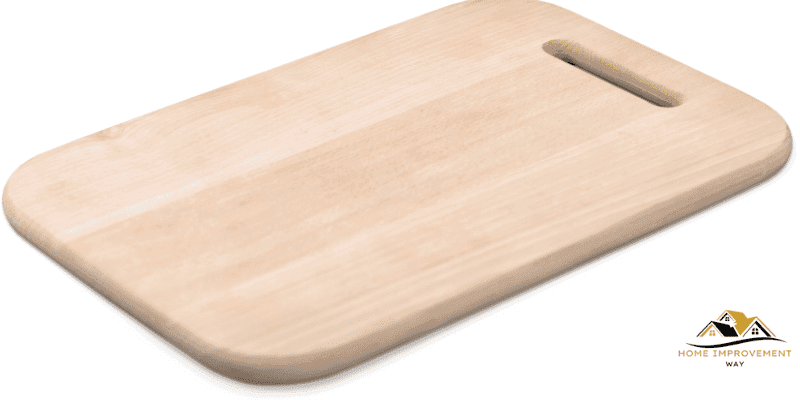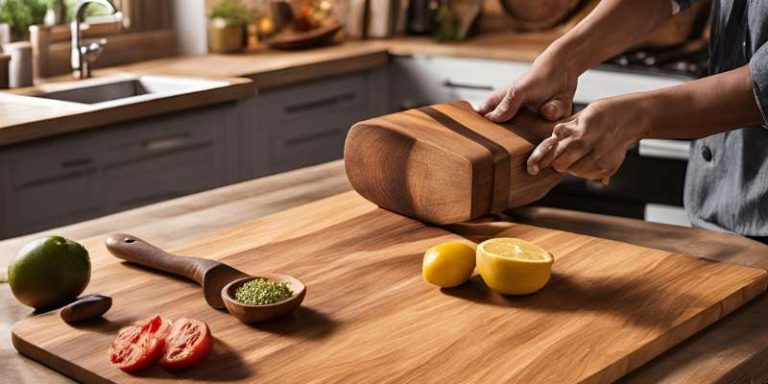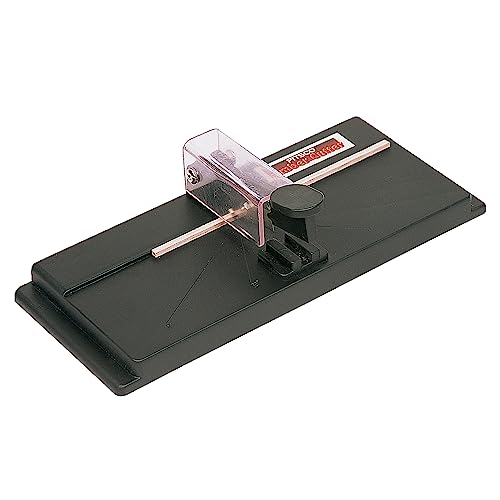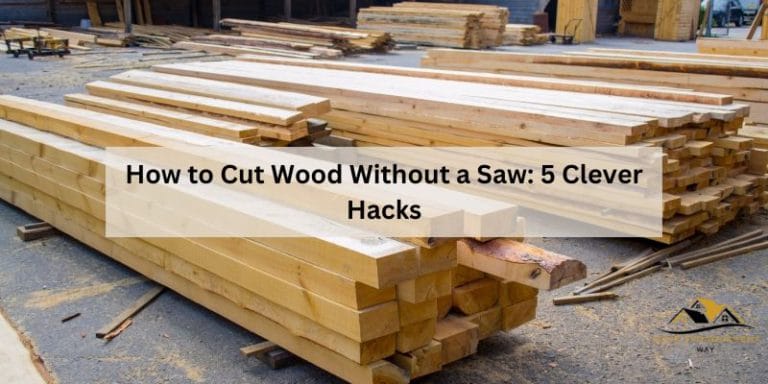Is Poplar Good for Cutting Boards: The Definitive Guide
Yes, Poplar is good for cutting boards as it is durable and easy to work with wood. Poplar is a popular choice for cutting boards due to its durability and ease of maintenance.
Its tight grain structure and moisture resistance make it an ideal choice for kitchen use. Additionally, Poplar is readily available and affordable, making it a popular choice for homemade cutting boards. Its light color also provides a beautiful canvas for food presentation.
Whether you are a professional chef or a home cook, a Poplar cutting board can be a practical and stylish addition to your kitchen. With proper care and maintenance, a Poplar cutting board can last for years, making it a sustainable and functional choice for food preparation.
Understanding Poplar Wood
Poplar wood, also known as tulipwood, is a popular choice in woodworking due to its affordability, ease of availability, and versatility. This light-colored hardwood is widely used in various applications, including furniture making, cabinetry, and cutting boards. Understanding the characteristics, grain pattern, durability, and common uses of poplar wood is essential for determining its suitability for cutting boards.
Characteristics Of Poplar
Poplar wood is known for its light color and subtle grain pattern, making it ideal for staining. It has a uniform texture with straight, fine grains that make it easy to work with using both hand and power tools. Despite being a softer hardwood, poplar exhibits excellent stability and minimal shrinkage, making it suitable for a wide range of woodworking projects.
Grain Pattern
The grain pattern of poplar wood is relatively straight, creating a consistent and appealing appearance when used in woodworking projects. This uniformity makes it an attractive choice for cutting boards, as it provides a sleek and seamless surface for cutting and food preparation.
Durability
While poplar wood is not as durable as harder hardwoods like maple or cherry, it still offers adequate resistance to wear and tear. The wood’s moderate hardness and stability allow it to withstand the rigors of cutting and chopping without compromising its structural integrity, making it a practical choice for cutting board construction.

Common Uses Of Poplar
Poplar wood finds a wide range of applications in woodworking, including furniture making and cabinetry. Its affordability and ease of working make it a popular choice for both professional woodworkers and hobbyists. When it comes to cutting boards, poplar’s moderate hardness and attractive grain pattern make it a viable option for creating functional and visually appealing kitchen accessories.
Woodworking Applications
- Furniture making
- Cabinetry
- Cutting boards
Properties Ideal For Cutting Boards
When it comes to choosing the right wood for cutting boards, it’s crucial to consider specific properties that make it suitable for this purpose. Poplar wood possesses several characteristics that make it an ideal choice for cutting boards, including excellent hardness and durability, resistance to moisture and bacteria, and benefits for kitchen use. Let’s delve deeper into the properties that make poplar a great option for cutting boards.
Hardness And Durability
Poplar wood, despite being categorized as a hardwood, is relatively softer compared to other hardwoods like maple or oak. This unique blend of hardness and softness makes it an ideal material for cutting boards. While it’s soft enough to not dull knives quickly, it’s hard enough to withstand the rigors of daily use in the kitchen, making it durable and long-lasting.
Comparing Poplar To Other Woods
When comparing poplar to other woods commonly used for cutting boards, such as maple and oak, poplar may not be as hard, but it offers a good balance of hardness and durability. Its ability to resist knife markings and gouges makes it a practical choice for cutting boards.
Resistance To Moisture And Bacteria
Poplar wood has natural moisture resistance, which is essential for cutting boards as they are constantly exposed to water and food. Additionally, poplar has natural anti-bacterial properties, reducing the risk of bacterial growth on the surface of the cutting board, making it a hygienic choice for food preparation.
Despite being a softer wood, poplar’s resistance to moisture and bacteria makes it a suitable choice for use in the kitchen, ensuring a safe and healthy food preparation environment.
Pros And Cons Of Using Poplar For Cutting Boards
Pros and Cons of Using Poplar for Cutting Boards
Advantages
Poplar is a hardwood that is widely used in woodworking and offers several benefits for cutting boards. It is known for its cost-effectiveness, eco-friendliness, and versatility.
Cost-effectiveness
Poplar is an economically viable option for cutting boards, making it an ideal choice for budget-conscious consumers. Despite being cost-effective, it doesn’t compromise on quality and durability.
Eco-friendliness
Poplar is a sustainable and renewable resource, making it an environmentally friendly option for cutting boards. Using poplar helps in reducing the demand for exotic and endangered wood species, contributing to the conservation of natural resources.
Disadvantages
While poplar offers various advantages, it also has some drawbacks to consider, such as susceptibility to scratches and specific maintenance requirements.
Susceptibility To Scratches
Poplar cutting boards are prone to scratches due to their softness compared to other hardwoods. Users need to be mindful of this and adopt proper cutting techniques to maintain the board’s appearance and functionality.
Maintenance Requirements
Poplar cutting boards require regular maintenance to ensure their longevity. This includes proper cleaning, drying, and occasional resealing to protect the wood from moisture and prevent warping or splitting.
Poplar Cutting Board Care And Maintenance
Poplar cutting boards offer a versatile and sustainable option for kitchen use. However, proper care and maintenance are crucial to ensure their longevity. Here are some essential tips for maintaining and extending the lifespan of poplar cutting boards:
Proper Cleaning And Maintenance
Regularly clean your poplar cutting board with mild soap and warm water, then dry it thoroughly with a clean cloth. Additionally, applying a food-safe mineral oil will help to condition and protect the wood.
Avoiding Water Damage
Avoid submerging the poplar cutting board in water or putting it in the dishwasher, as excessive moisture can cause warping or cracking. Instead, wipe it down immediately after use and store it in a dry area.
Replenishing The Protective Finish
Periodically replenish the protective finish of the poplar cutting board by applying a thin layer of food-grade mineral oil. This will help prevent the wood from drying out and cracking, maintaining its durability.
Longevity And Sustainability
Poplar cutting boards are known for their longevity and sustainability. With proper care, they can last for years, making them an eco-friendly and cost-effective choice for your kitchen.
Extending The Lifespan Of Poplar Cutting Boards
By following these care and maintenance tips, you can ensure that your poplar cutting board remains in optimal condition, prolonging its lifespan and preserving its natural beauty for years to come.
Frequently Asked Questions On Is Poplar Good For Cutting Boards
Is Poplar A Good Wood For Cutting Boards?
Poplar is a softer hardwood, making it less ideal for cutting boards. It’s prone to gouges and scratches, compromising its durability. While it’s affordable and readily available, consider harder woods like maple or walnut for a longer-lasting cutting board.
Conclusion
Poplar can be a suitable choice for cutting boards due to its affordability and ease of working with. With proper care and maintenance, it can serve well for light to moderate cutting tasks. However, it may not withstand heavy-duty use compared to hardwoods like maple or walnut.
Consider your specific needs for the best decision.







